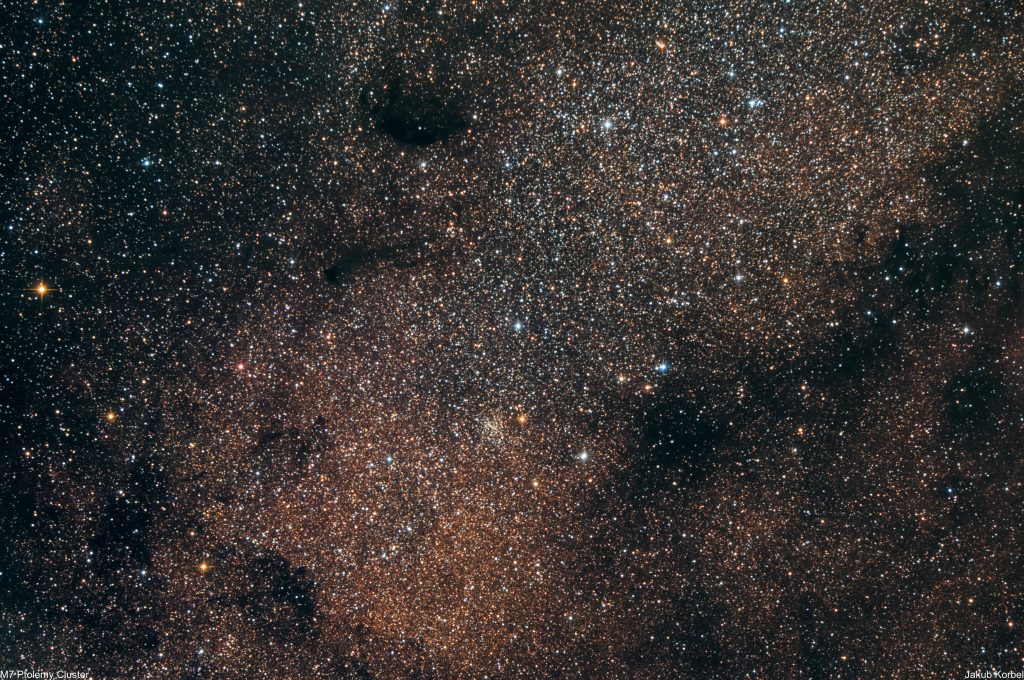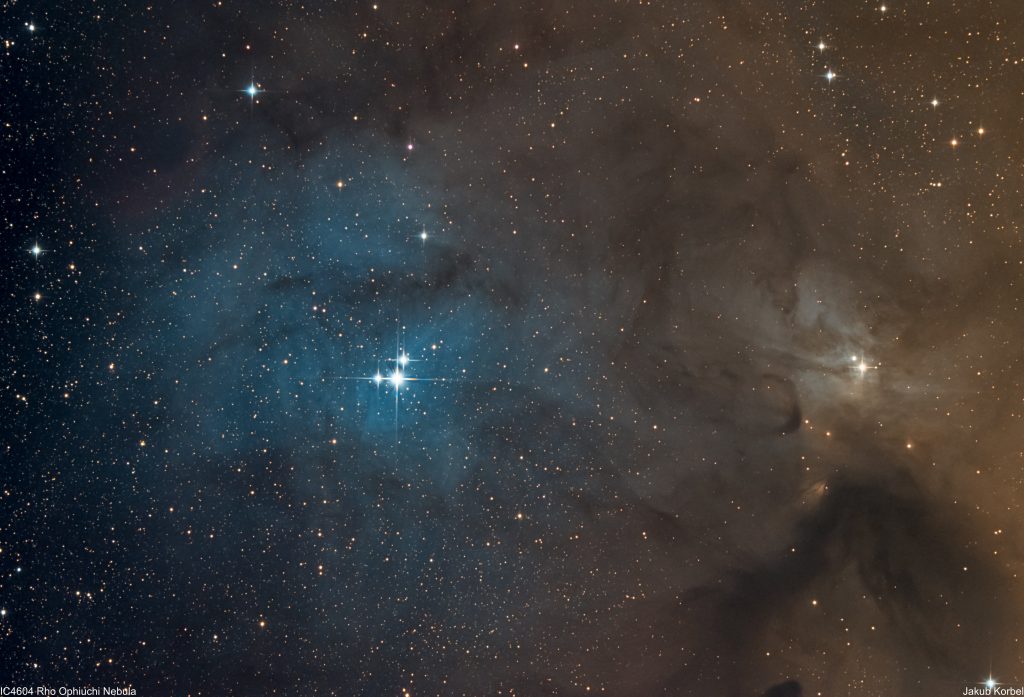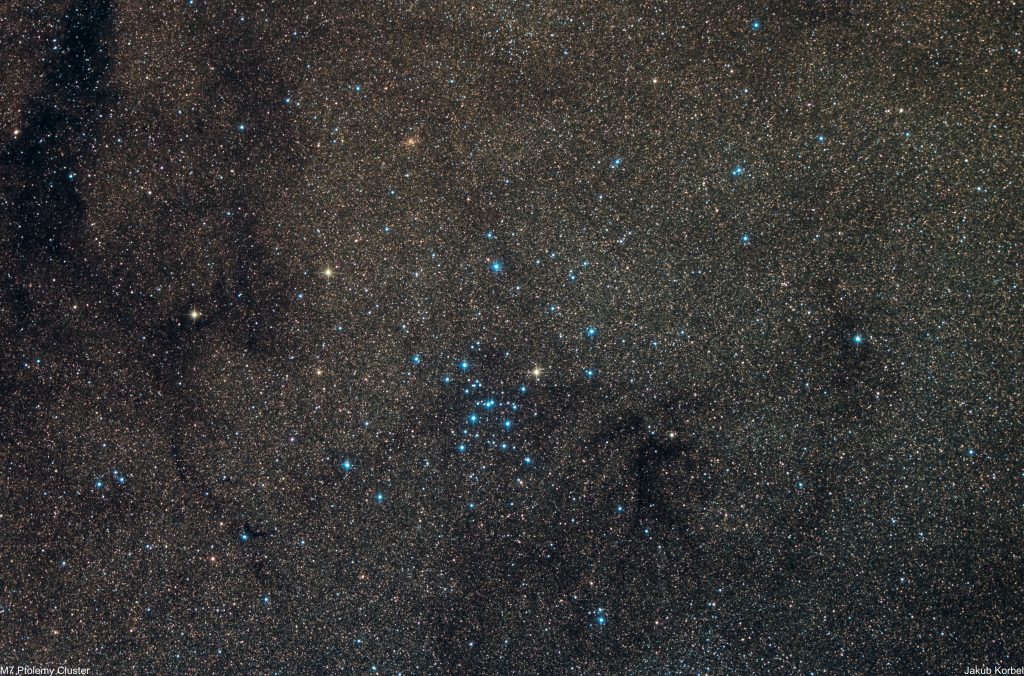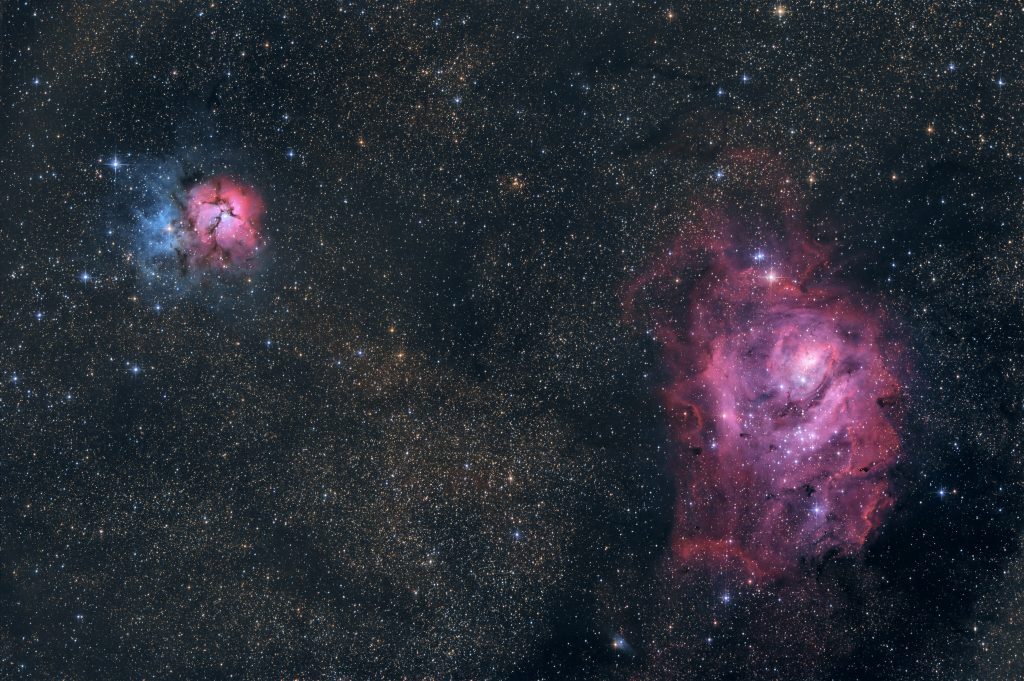Messier 4 (left side of the picture) is a globular cluster located in the constellation Scorpius, close to the brightest star of this constellation Antares (right side). This cluster is the closest one to the Solar System, due to its “short” distance of 7200 light-years and it contains several tens of thousands of stars. There is another globular cluster on the bottom side of the picture NGC 6144. The star Antares is classified as a red supergiant, with a diameter several times bigger than the Sun, which makes it one of the largest know stars. it is only 550 light-years away, which means M4 and Antares are close only visually, but in reality, there is a very long distance between them.
If any brighter star is photographed by the Newtonian telescope, the diffraction cross appears due to the so-called “spider vanes” holder of the secondary mirror. If the spider vanes are not perpendicular to each other (like in my case), the diffraction pattern makes multiple ugly lines. This means I will have to correct it, as soon as I get back from Fuerteventura.
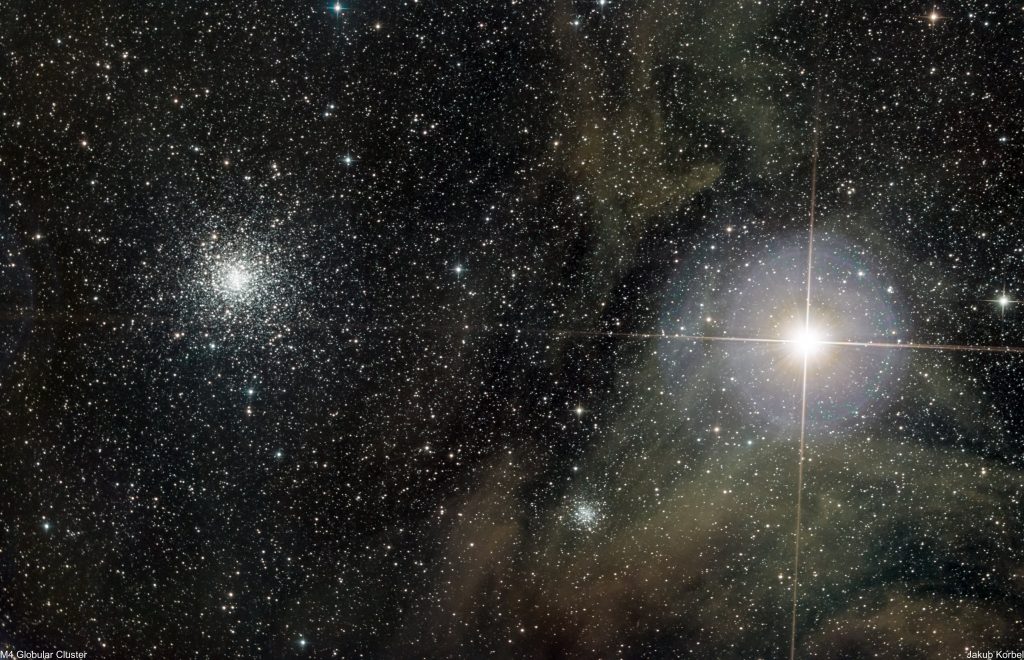
Technical details:
| Telescope | Newton 150/600 mm |
| Aperture | 150 mm |
| Focal length | 570 mm |
| Mount | Rainbow Astro RST 135 |
| Autoguiding | ZWO 174MM, Guidescope 30 mm |
| Camera | ZWO 071 Pro @-0°C |
| Corrector | TS MaxField |
| Filters | No |
| Exposure | 44x180s, Gain 94, bin 1x1, |
| Date | 2020-07-23 |


